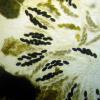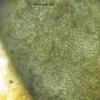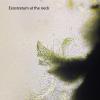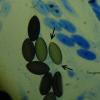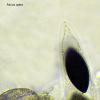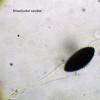
17-12-2025 18:35
 Michel Hairaud
Michel Hairaud
Bonjour à tous/Hi to everyone I am passing along

15-12-2025 15:48
 Danny Newman
Danny Newman
Melanospora cf. lagenaria on old, rotting, fallen

15-12-2025 15:54
 Johan Boonefaes
Johan Boonefaes
Unknown anamorph found on the ground in coastal sa

15-12-2025 21:11
 Hardware Tony
Hardware Tony
Small clavate hairs, negative croziers and IKI bb

15-12-2025 07:09
 Danny Newman
Danny Newman
indet. Rutstroemiaceae sp. on unk. fallen leavesMc

15-12-2025 07:05
 Danny Newman
Danny Newman
Pseudosclerococcum golindoi (det: Zotto)near Cosb

15-12-2025 11:49
 Danny Newman
Danny Newman
ITS sequences from the following two collections B

15-12-2025 12:34
 Danny Newman
Danny Newman
indet. Rhytismataceae on oak leafnear Purchase Roa
The dung is from an area of unimproved chalk grassland being grazed by cattle.
Location was on the South Downs, near Steyning, West Sussex, England.
Lat, long: 50.886673, -0.347259.
Perithecia immersed with necks protruding above dung surface. Perithecia 0.5mm. to 1mm. in diameter. Necks black and glabrous, perithecia semi-translucent. Hyphoid hairs growing from peridium, brown, septate and flexuous.
Asci average 300 x 50 tapering at base, spores irregularly arranged. Spores black, 43.75 to 52.5 (57) x 20-24. Central germ pore at each end of spore.
One gelatinous cauda attached centrally at each end. Caudae noticeably broad at base, similar in width or slightly wider than spores, faint striae visible at base of some.
It seems to be a good fit for Arnium cirriferum, as per the record on Ascofrance database and ref. Doveri, Fungi Fimicoli Italici and Anne Bell Coprophilous Ascomycetes of Australia.
As far as I am aware this species has not been found in the UK before so it would be great if someone could confirm the determination or suggest what else it might be.
Thanks
Vivien

Your determination is correct; It is a very beautiful species that is not very often found.
Michel.
Yes, I think the caudae in particular are most elegant and attractive.
All the best
Vivien


